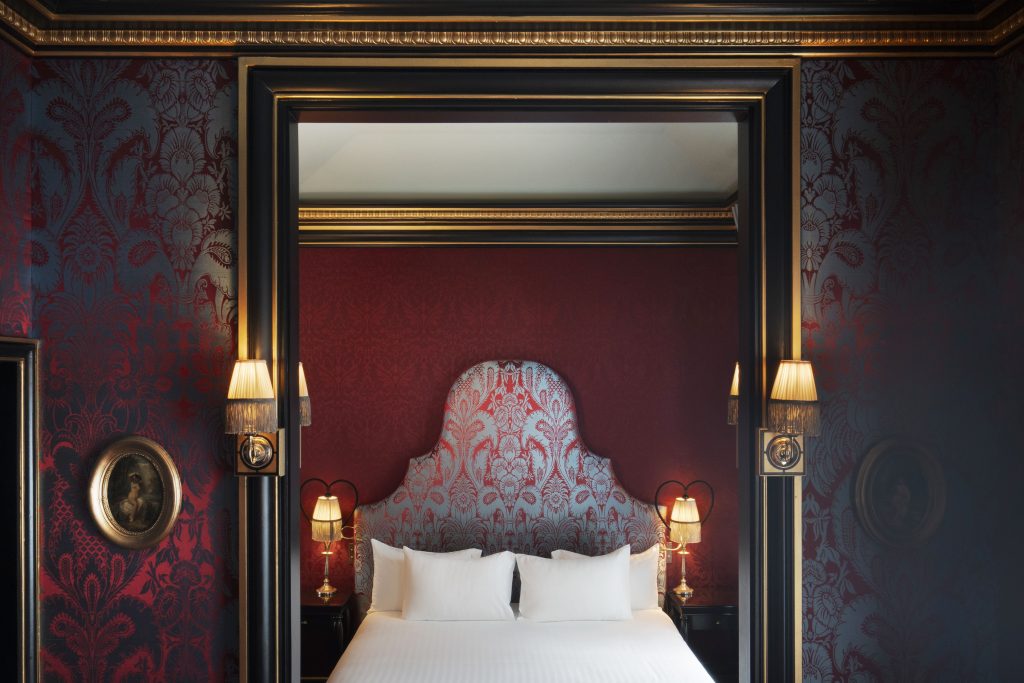
18th CENTURY INSPIRATION
In the Age of Enlightenment that rediscovered past styles, decorative art reigned supreme. Reflecting the fortunes of the elite, fabrics manufactured in renowned French establishments were adorned with Pompeian-inspired volutes and medieval motifs in flamboyant hues.
You’ll find this inspiration in the Rose and La Castiglione rooms and suites.
Rose
18th CENTURY INSPIRATION
“Fresh and sprightly with its yellow facade facing a street behind the Saint-Étienne church in Fécamp, Maison Tellier possesses the familial atmosphere of a boarding house for young ladies. Among the three young women who work on the first floor, there is the lively Rose: this ‘little ball of flesh all belly with tiny legs, sang from morning till night, with a hoarse voice, verses alternately lewd or sentimental, told endless or insignificant stories, never ceased talking except to eat, and ate only to talk, always moving, nimble as a squirrel despite the fatness and the tightness of her limbs; and her laughter, a cascade of high-pitched cries, burst forth incessantly, here and there, in a room, in the attic, at the café, everywhere, about nothing in particular.”
Guy de Maupassant, La Maison Tellier
LA CASTIGLIONE
18th CENTURY INSPIRATION
The only daughter of a marquis from the Piedmontese petty nobility, Virginia de Castiglione received a careful education. Her beauty earned her the nickname “the pearl of Italy” very quickly, and just as quickly, she was married at 16 to a count who neglected her. Several lovers later, Virginia became the mistress of King Victor Emmanuel II of Sardinia and was secretly entrusted with a mission that thrilled her: to seduce Napoleon III to influence his political decisions and contribute to the unification of Italy. In 1856, the emperor yielded to the beautiful Italian, opening all the doors to Europe’s private salons for her, before his narcissistic and vain character eventually wearied of her after two years of liaison.
While Virginia died in 1899, neurasthenic and misanthropic, unable to accept her faded beauty and extinguished successes, posterity would not forget her: staging herself and being photographed more than two hundred times, adorned in her most beautiful gowns and in uncommon poses and angles, the elegant countess marked the history of photography with her creativity, far ahead of her time.

